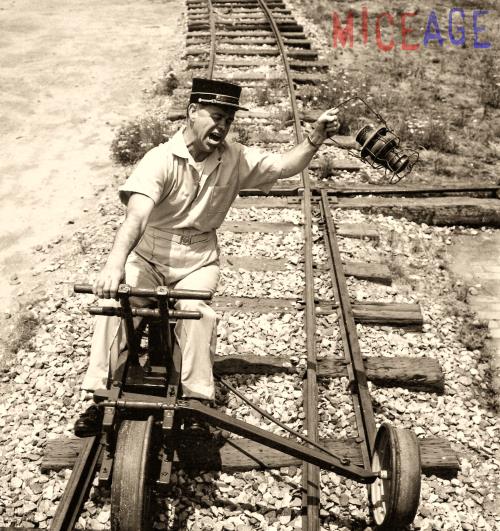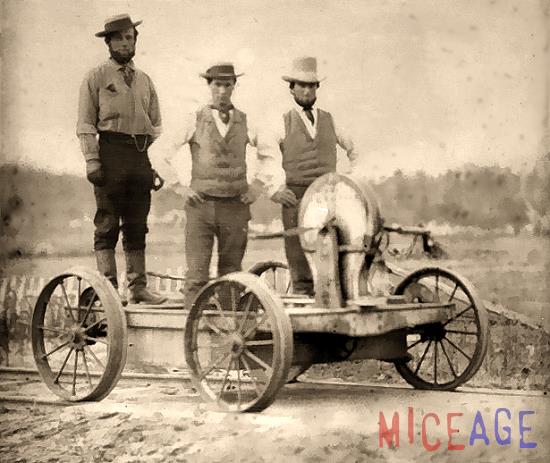| Pumped Up!
(continued)
The most important aspect of infrastructure on the railroad is, of course,
the roadbed and track. Even in railroading's earliest days in the 1830s, it was
necessary to constantly inspect the track for things such as loose spikes,
damaged crossties or mis-aligned rails that could derail the train. Section
hands--men charged with inspection of sections of track--were charged with keeping
the main lines train-ready, and would walk their sections inspecting the track.
And when railroads were being built, the men who aligned the rails using the
leverage from their long-handled shovels from the Gandy Shovel Company ("Gandy
Dancers") needed an efficient way to travel to and from the work site at the
ever-lengthening "end of the line."
Firing up a steam locomotive just to transport a few workers here or there,
or inspect a few miles of track, was inefficient in the extreme. As railroads
became bigger, it soon became necessary to have a more efficient way for section
hands and Gandy Dancers to inspect the track or get to the worksite.
Soon, hand-operated cars were invented to address these problems. Some were
tricycles, called "velocipedes" that could only transport one man.

Ward Kimball hams it up aboard his velocipede.
Some were similar to the four-wheeled handcars we know today.

An early handcar of the Civil War era.
Through the years, the basic handcar design became somewhat standard, and was
made by a few companies until the advent of reliable internal combustion
engines. A platform supported by four steel wheels supported a wooden A-shaped
frame. In the middle of the frame was a pivot, and from the pivot extended a rod
in either direction, which terminated in a "T" shaped handle. Up to four people
could pump the handle, teeter-totter style. The handle was connected by a rod to
a large gear wheel, which in turn powered the wheels of the handcar through the
gear mechanism. Stopping was accomplished by stepping on a floor-mounted pedal,
which would force wooden brake blocks against the wheels.

The handcar in its most-familiar form.
Eventually, self-propelled "speeders," powered by small internal-combustion
engines, replaced handcars. Today, modern trucks equipped with railroad wheels
that can be used effectively on both railroad track and paved roads, knows as
hi-rail vehicles, carry out the jobs that were handled by handcars a century
ago. While effective and efficient, they are nowhere near as romantic as the
old-fashioned hand-pumped handcar.
Next: Walt gets his handcar. |